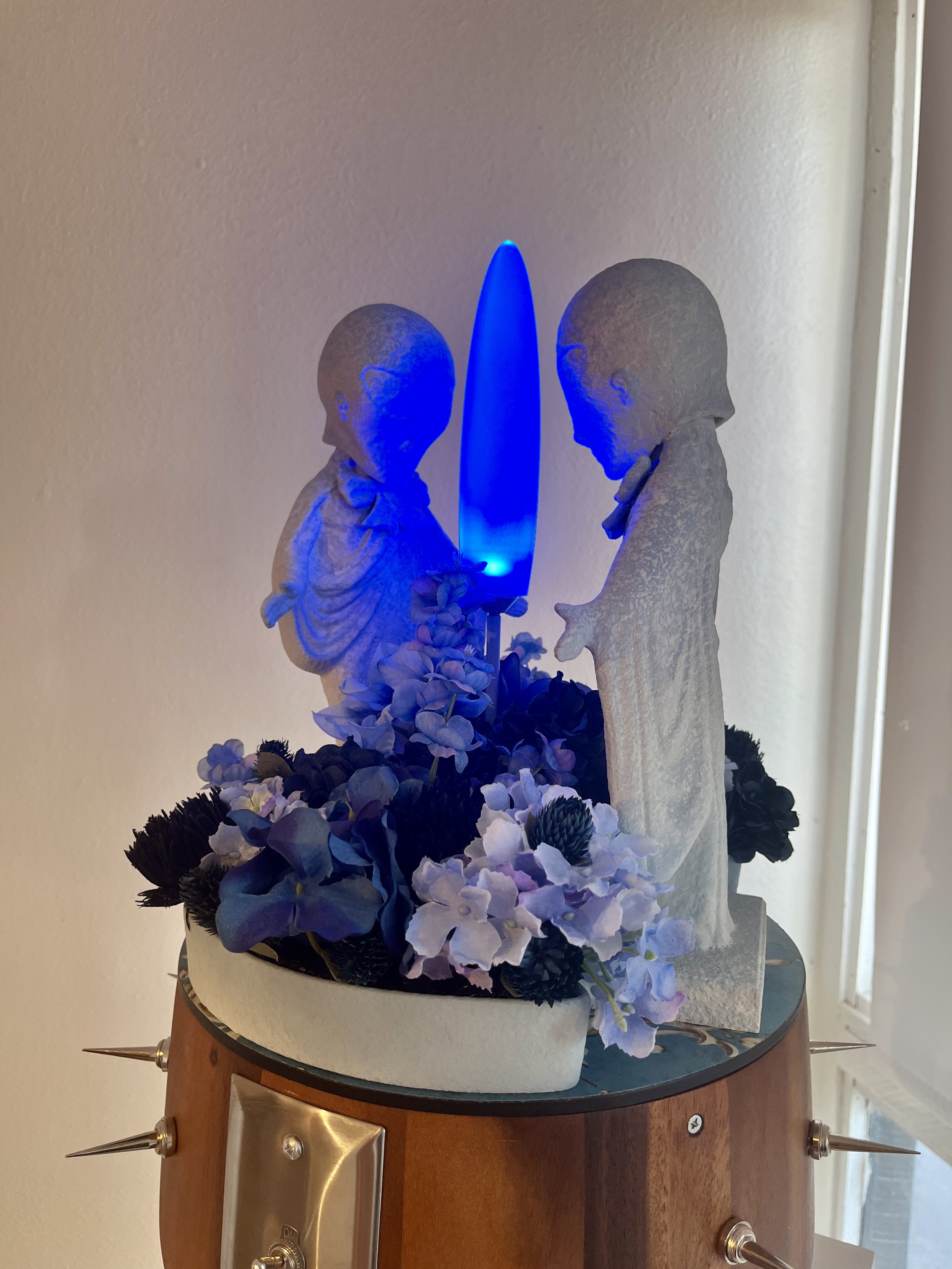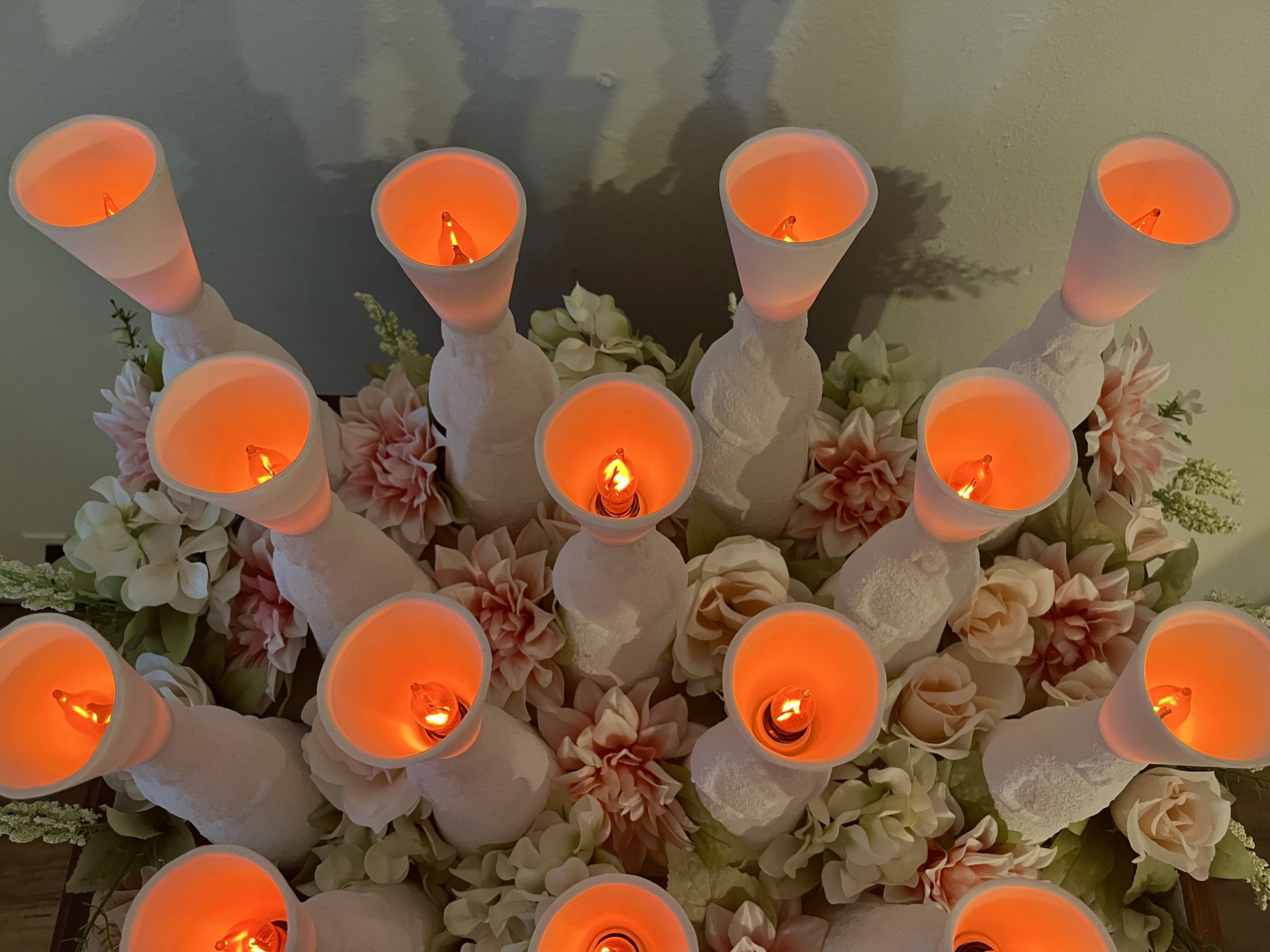"The Crying Room" Chris Bauder
Art, in its most profound essence, serves as a mirror reflecting the intricate dance between human experience and the passage of time. Chris Bauder’s latest exhibition, "The Crying Room," embodies this very spirit. A celebration of materials, memories, and metaphors, Bauder’s work is an evocative journey through the realms of aging, preservation, and the fragility of the human condition.
Born in 1978, Chris Bauder has carved a unique niche in the Las Vegas art scene, known for his adept manipulation of various mediums to explore themes of longevity and decay. Bauder’s oeuvre includes the use of slip cast ceramics, found materials, bronze, and latex paint—each chosen for their distinct properties and symbolic weight. While bronze symbolizes strength and prestige, latex paint embodies fragility. This meticulous selection underscores Bauder’s contemplation on life expectancy and the enduring nature of art. Through his process of casting, covering, and dipping found objects, Bauder immortalizes the fleeting, forging a tangible connection to his childhood memories and the symbols that shaped them.
"The Crying Room" is an exploration of myths, legends, and the didactic stories we use to impart lessons about growth, society, and change. Bauder reflects on the manipulative tactics often employed to instill these teachings, particularly the way fear and coercion are used to convey messages deemed essential for societal conformity.
Bauder’s reflection on his own life—marked by physical decline and mental transformation—permeates the exhibition. He delves into the choices that have defined his existence, from dietary and drug consumption to the beliefs he has cultivated over the years. The works in "The Crying Room" are crafted to awaken unconscious desires, blending morbid beauty with an underlying darkness.
In this exhibition, Bauder integrates sculptures with lighting elements, juxtaposing bronze and latex forms with neon lights and flicker bulbs. This combination not only dazzles the viewer but also manipulates perception, echoing the manipulation inherent in the myths and legends Bauder critiques. The use of neon, reminiscent of 1950s TV lamps, serves as a historical nod to past efforts to mitigate the supposed dangers of television light, such as blindness and insanity. Flicker bulbs, suggesting false fire, provoke contemplation on the existence of Hell and the dualities of truth and illusion.
Repetition is a recurring motif in "The Crying Room," underscoring the interconnectedness of the exhibited works. Flowers, fire, snakes, tumors, light, and smiley faces appear throughout, symbolizing the intertwined nature of growth and destruction, good and evil. These elements serve as visual anchors, guiding the viewer through Bauder’s narrative landscape where humor and satire punctuate deeper reflections on worship, sexuality, disease, and death.
Chris Bauder’s "The Crying Room" is more than an art exhibition; it is a visceral experience that challenges perceptions and provokes introspection. By blending personal history with universal themes, Bauder invites us to reflect on the stories that shape our understanding of the world and our place within it. Through his innovative use of materials and his poignant thematic explorations, Bauder ensures that "The Crying Room" will linger in the minds of its audience, a testament to the enduring power of art to capture the ephemeral nature of human existence.



































































































































